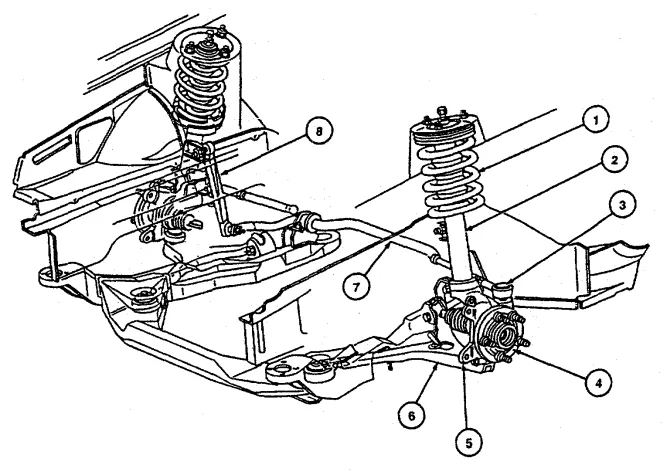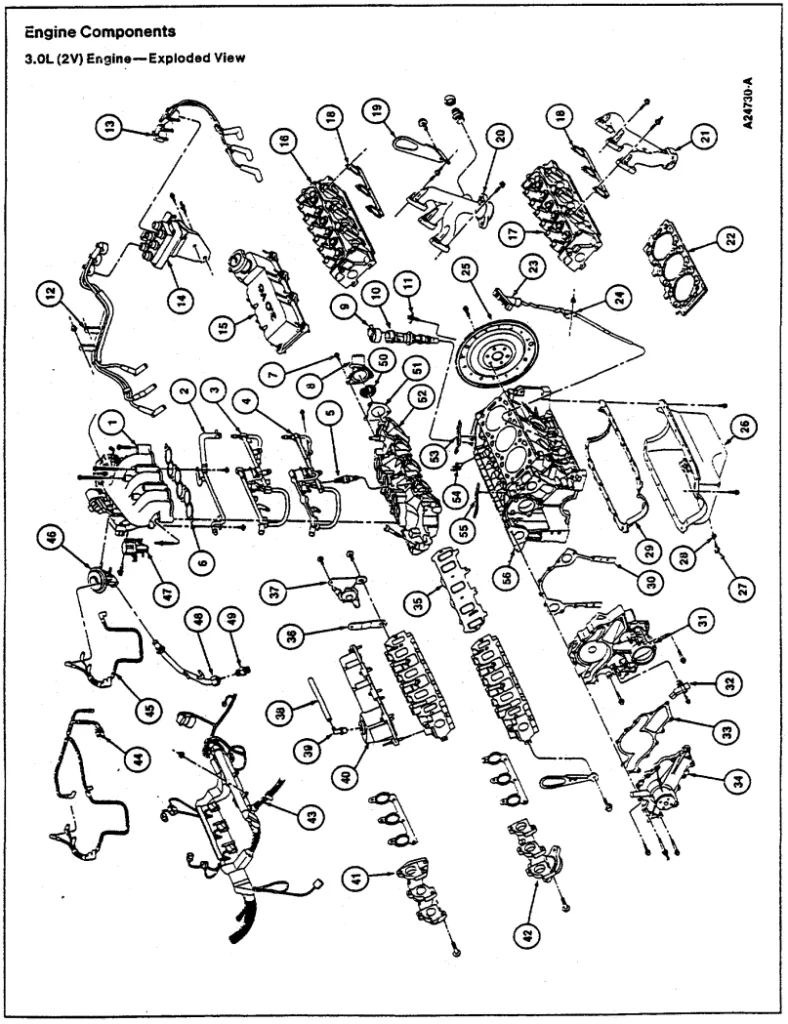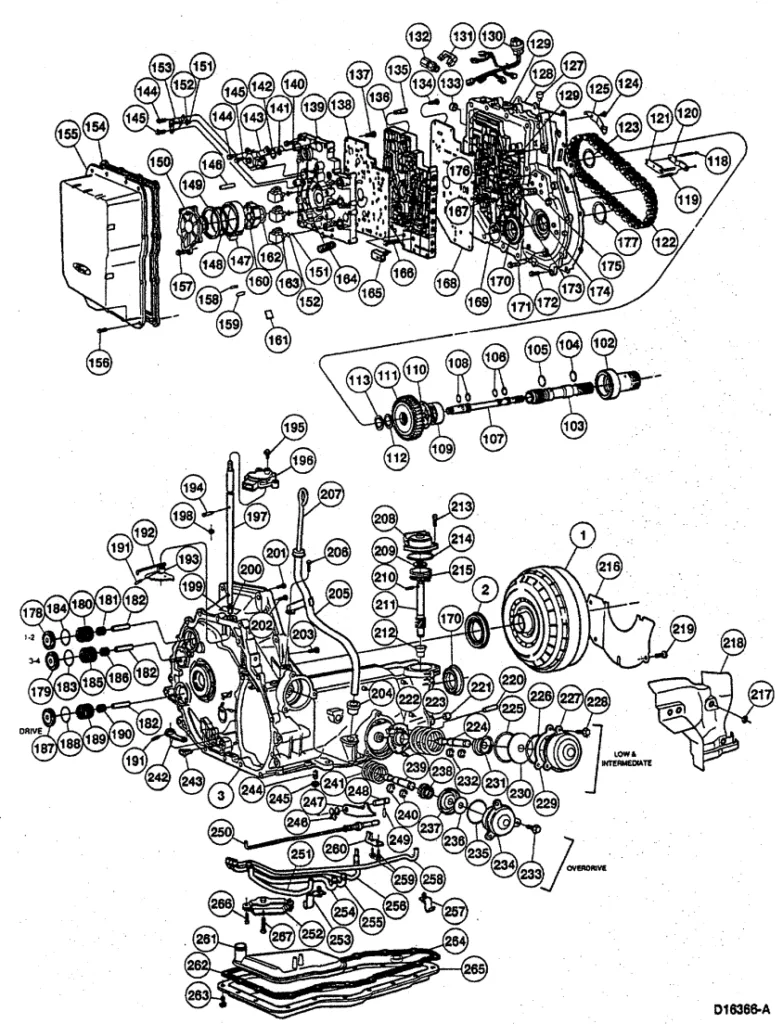This technical summary is based on the academic paper "Analysis of the Potential for New Automotive Uses of Wrought Magnesium" published by L. Gaines, R. Cuenca, F. Stodolsky, and S. Wu at the Center for Transportation Research, Argonne National Laboratory (1996). It was analyzed and summarized for automotive engineers by CASTMAN experts with the help of LLM AI such as Gemini, ChatGPT, and Grok.

Keywords
- Primary Keyword: Wrought Magnesium Automotive Applications
- Secondary Keywords: Magnesium alloys, lightweight materials, automotive weight reduction, magnesium extrusion, superplastic forming, corrosion resistance, magnesium recycling
Executive Summary
- The Challenge: Achieving significant weight reduction in vehicles to improve fuel efficiency and meet emissions standards while maintaining cost-effectiveness and structural integrity.
- The Method: The study evaluates wrought magnesium (Mg) as a lightweight alternative to steel and aluminum, analyzing its properties, production, forming techniques, and barriers to adoption.
- The Key Breakthrough: Wrought Mg offers up to 30% weight savings over aluminum and 60% over steel, with potential applications in structural components like spaceframes and body panels (Table 5).
- The Bottom Line: Despite its high cost and technical challenges, targeted R&D can unlock Mg’s potential for high-volume automotive use, enhancing efficiency and performance.
The Challenge: Why This Research Matters for Automotive Professionals
For decades, automotive engineers have grappled with the challenge of reducing vehicle weight to improve fuel economy and comply with stringent emissions regulations. Steel, while cost-effective, is heavy, and aluminum, though lighter, is still more expensive than desired. Magnesium, with a density 30% lower than aluminum and 60% lower than steel (Table 2), presents a compelling opportunity for weight reduction. However, its high cost (3.5–6 times that of steel per pound) and concerns about corrosion, formability, and recycling have limited its use beyond die castings (Section 1.2). This research explores how wrought Mg can overcome these barriers to enable lightweight, high-performance vehicles.
The Approach: Unpacking the Methodology
The researchers conducted a comprehensive review of magnesium’s properties, production processes, and potential automotive applications. They analyzed:
- Material Properties: Compared Mg’s mechanical properties (e.g., yield strength, tensile strength) to aluminum and steel (Table A-4).
- Fabrication Techniques: Evaluated processes like extrusion, stamping, and superplastic forming for producing wrought Mg parts (Section 4.4).
- Case Studies: Reviewed historical and current uses of Mg in vehicles, such as the Metro-Lite truck (Figure 2) and Volvo LCP 2000 project (Section 1.3).
- Barriers to Adoption: Identified economic and technical challenges, including cost, corrosion, and joining (Section 5.3).
The study draws on data from industry sources, prior research, and automotive case studies to propose actionable R&D recommendations (Section 5.2).
The Breakthrough: Key Findings & Data
The paper highlights wrought Mg’s transformative potential for automotive applications:
- Weight Reduction: Mg’s low density (1.74 g/cm³ vs. 2.7 g/cm³ for Al and 7.8 g/cm³ for steel) enables significant mass savings, critical for fuel efficiency (Table 2).
- Mechanical Properties: Mg alloys like AZ31B and ZK60A offer high strength-to-weight ratios, with yield strengths comparable to low-strength Al alloys (Table A-4).
- Formability: Wrought Mg can be extruded, stamped, or superplastically formed into complex shapes like bumper supports and seat frames (Table 5).
- Corrosion Mitigation: New alloys (e.g., AE42) and protective coatings reduce corrosion risks, with AZ31 showing better resistance than mild steel in rural environments (Table A-7).
- Recycling Potential: While recycling infrastructure is underdeveloped, closed-loop recycling of Mg scrap could lower costs (Section 4.6).
Practical Implications for Automotive Manufacturing
The findings suggest actionable strategies for integrating wrought Mg into vehicle production:
- For Process Engineers: Optimizing extrusion processes, as discussed in Section 4.4.2, could reduce production costs by up to 20% through high-rate extrusion techniques.
- For Quality Control: Monitoring corrosion resistance using data from Table A-7 can ensure Mg parts meet durability standards, particularly in non-coastal environments.
- For Design Engineers: Incorporating Mg extrusions in spaceframes (Figure 4) or hot-formed sheets for body panels (Table 5) can achieve 30% weight savings over Al while maintaining crashworthiness (Section A.5).
Paper Details
1. Overview:
- Title: Analysis of the Potential for New Automotive Uses of Wrought Magnesium
- Authors: L. Gaines, R. Cuenca, F. Stodolsky, S. Wu
- Year of Publication: 1996
- Journal/Academic Society: Center for Transportation Research, Argonne National Laboratory
- Keywords: Magnesium alloys, lightweight materials, automotive weight reduction, magnesium extrusion, superplastic forming, corrosion resistance, magnesium recycling
2. Abstract:
The paper evaluates the potential for wrought magnesium in automotive applications beyond die castings. It discusses Mg’s low density, mechanical properties, and formability, identifying potential uses in structural components. High costs and technical barriers (e.g., corrosion, joining) are analyzed, with R&D recommendations to enable large-volume adoption.
3. Introduction:
Magnesium’s abundance and low density make it an attractive material for automotive weight reduction. Historically, Mg was used in vehicles like Ford’s 1920s pistons and the Metro-Lite truck (Figure 2), but its use has been limited by cost and technical challenges (Section 1.3).
4. Summary of the Study:
- Background of the Research Topic: Reducing vehicle weight is critical for fuel efficiency and emissions compliance. Mg offers significant weight savings but faces adoption barriers (Section 1.1).
- Status of Previous Research: Prior studies focused on Mg die castings; wrought Mg applications are underexplored (Section 1.3).
- Purpose of the Study: To assess wrought Mg’s potential for automotive structural components and identify R&D needs (Section 1.2).
- Core Study: The research analyzes Mg’s properties, fabrication, and applications, proposing solutions to overcome economic and technical barriers (Section 5).
5. Research Methodology
- Research Design: Literature review and analysis of Mg’s properties, production, and automotive applications.
- Data Collection and Analysis Methods: Compiled data from industry reports, material property tables (e.g., Table A-4), and case studies (e.g., Figure 2).
- Research Topics and Scope: Focused on wrought Mg’s mechanical properties, formability, corrosion resistance, and recycling, with emphasis on automotive structural components (Section 5.1).
6. Key Results:
Key Results:
- Wrought Mg enables up to 30% weight reduction over Al and 60% over steel (Table 2).
- Alloys like AZ31B and ZK60A are suitable for extrusions and forgings (Table 5).
- Corrosion resistance is improving with new alloys and coatings (Table A-7).
- Recycling infrastructure needs development to reduce costs (Section 4.6).
Figure Name List:


- Figure 1. Automobile material composition vs. time
- Figure 2. Metro-Lite truck
- Figure 3. Body-in-white and its various constituent parts
- Figure 4. Extruded magnesium seat frame
- Figure 5. Corvette rear subframe
- Figure 6. Aluminum spaceframe
- Figure 7b. Typical components of a current automotive transaxle
- Figure 8. Typical front-wheel-drive front axle and steering components
- Figure 9. Typical front-wheel-drive rear axle and suspension
- Figure 11. Stages of product life cycle
- Figure A-1. Creep resistance of various magnesium alloys
- Figure A-2. Elevated-temperature properties for various Mg alloys
- Figure A-3. Axial mode of collapse
- Figure A-4. Bending mode of collapse
- Figure A-5. Major energy-absorbing components in front structure of an automobile
- Figure A-6. Front-end energy-absorption structure in which members are triggered
- Figure A-7. Schematic representation of crush panel concept of front-end energy-absorbing structure
- Figure B-B. Typical strain-rate dependence of selected deformation parameters in superplastic and conventional deformation
7. Conclusion:
Wrought Mg offers significant weight-saving potential for automotive applications, particularly in spaceframes, body panels, and chassis components. However, high costs, corrosion concerns, and underdeveloped recycling infrastructure are barriers. Targeted R&D in alloy development, forming processes, and recycling can enable cost-effective, high-volume use (Section 5).
8. References:
- ASM (1979) Metals Handbook, 9th Ed., Vol. 2, p. 523, American Society for Metals, Metals Park, OH.
- ASM (1983) ASM Metals Reference Book, 2nd Ed., American Society for Metals, Metals Park, OH.
- Fougner, S. (1994) "Assessment of Availability of Magnesium for Automotive Applications," Automotive Technology Development Contractor’s Coordination Meeting, Society of Automotive Engineers, Warrendale, PA.
- Pidgeon, L. M. (1986) in Encyclopedia of Materials Science and Engineering (ed., M. B. Bever), Vol. 4: Pergamon Press, New York.
- Pinfold, P., and D. Oym (1986) An Evaluation of Refined Recycled AZ91D Alloy, SAE 30420, in SAE SP-9-62, Magnesium Properties and Applications for Automobiles, Society of Automotive Engineers, Warrendale, PA.
- Volvo (no date) Volvo LCP 2000 Light Component Project: An International Study for Advanced Technology, Design, and Materials Development, Göteborg, Sweden.
Expert Q&A: Your Top Questions Answered
Q1: What was the single most critical factor identified in this study for improving vehicle weight reduction?
A1: The study highlights Mg’s low density (1.74 g/cm³) as the most critical factor, enabling up to 30% weight savings over aluminum and 60% over steel, as detailed in Table 2.
Q2: How does this research compare to traditional methods for addressing vehicle weight reduction?
A2: The paper’s Introduction notes that traditional methods rely on steel and aluminum, which are heavier or more expensive. Wrought Mg offers greater weight savings and easier formability (Section 1.2).
Q3: Is堕이 이 연구 결과는 모든 합금에 적용 가능한가, 아니면 특정 합금에만 적용 가능한가?
A3: The research focuses on specific Mg alloys like AZ31B, ZK60A, and AE42, as described in Section A.1. Applicability to other alloys requires further testing (Section 5.2).
Q4: What specific measurement or simulation technique did the researchers use to arrive at this conclusion?
A4: The researchers used comparative material property analysis (e.g., Table A-4) and reviewed fabrication techniques like extrusion and superplastic forming, supported by industry case studies (Section 4).
Q5: According to the paper, what is the main limitation or area for future research?
A5: The Conclusion identifies high production costs and underdeveloped recycling infrastructure as key limitations. Future research should focus on cost reduction and closed-loop recycling (Section 5.2).
Q6: What is the direct, practical takeaway from this paper for an automotive manufacturing facility?
A6: By adopting wrought Mg for components like spaceframes and body panels, manufacturers can achieve significant weight reductions, potentially improving fuel efficiency by 10–20%, as supported by the paper’s findings (Section 5.1).
Conclusion & Next Steps
This research underscores wrought magnesium’s potential to revolutionize automotive design by enabling significant weight reduction without compromising structural integrity. Overcoming barriers like cost and corrosion through targeted R&D can make Mg a game-changer for fuel-efficient vehicles.
At CASTMAN, we specialize in applying cutting-edge research to deliver high-performance die-cast components. If you’re exploring lightweight materials to enhance your automotive products, contact our engineering team to discuss how wrought magnesium solutions can meet your needs.
Copyright
- This material is a paper by L. Gaines, R. Cuenca, F. Stodolsky, and S. Wu. Based on "Analysis of the Potential for New Automotive Uses of Wrought Magnesium."
- Source of the paper: [Not available in provided document]
- This material is for informational purposes only. Unauthorized commercial use is prohibited. Copyright © 2025 CASTMAN. All rights reserved.